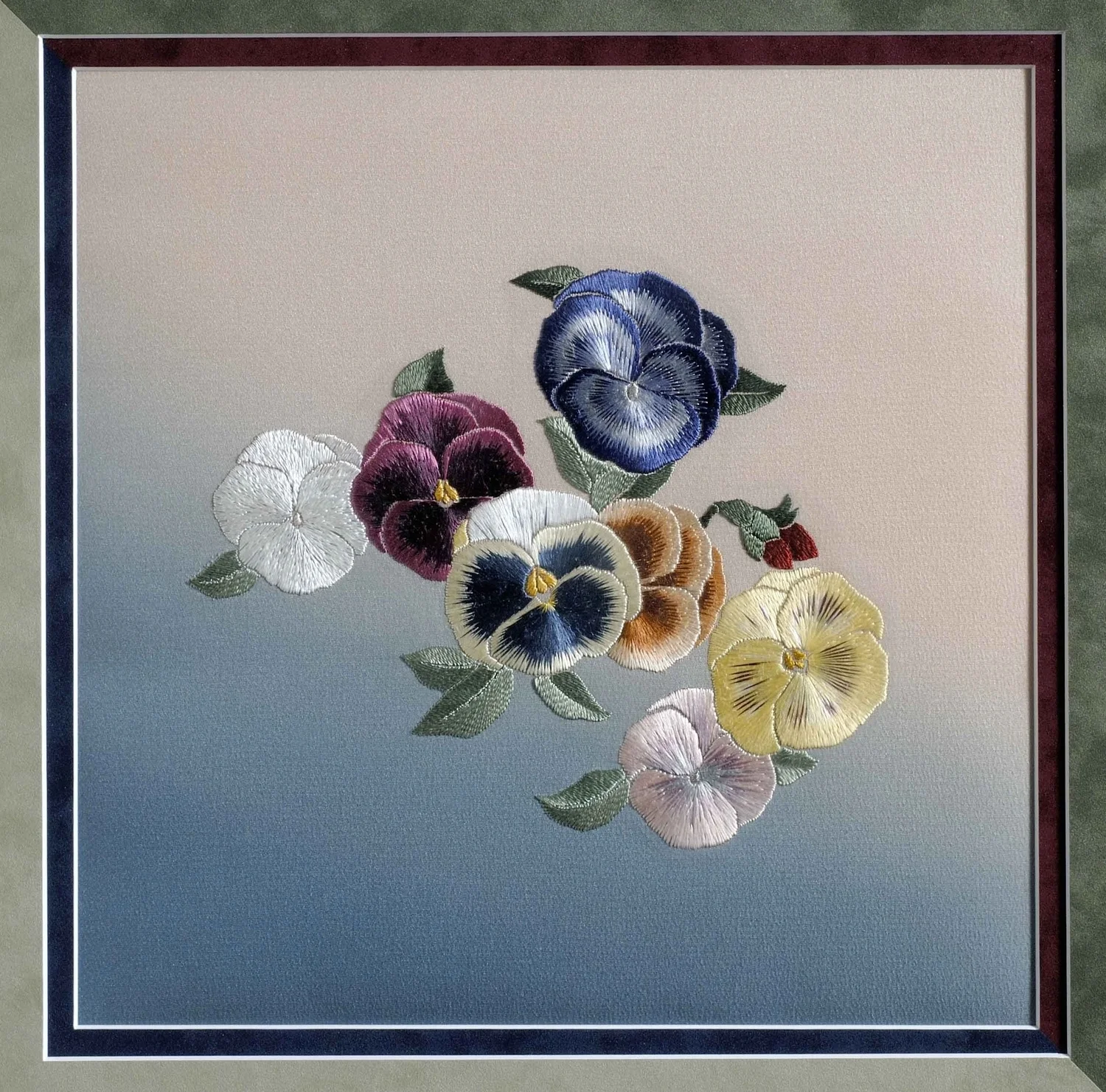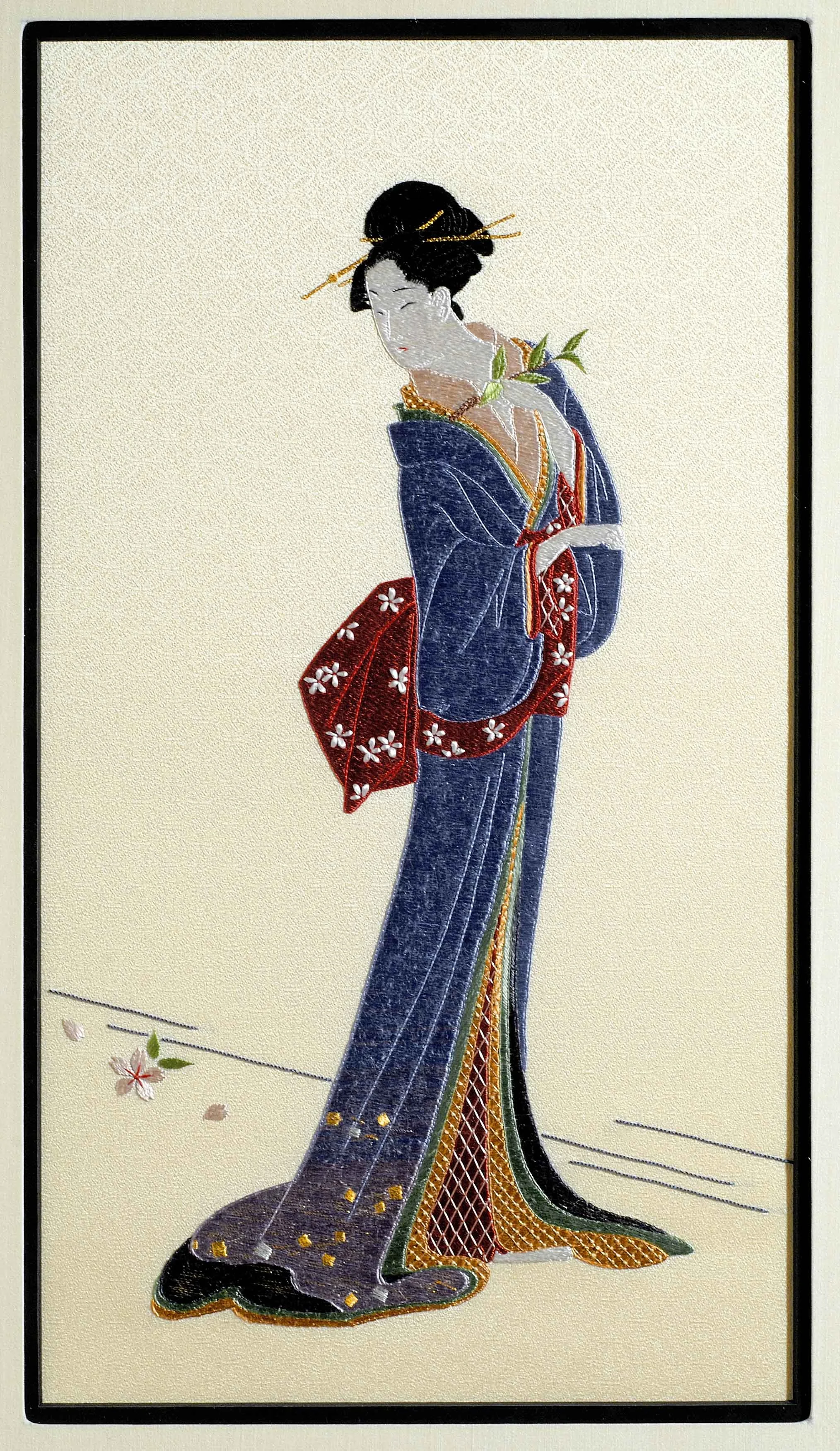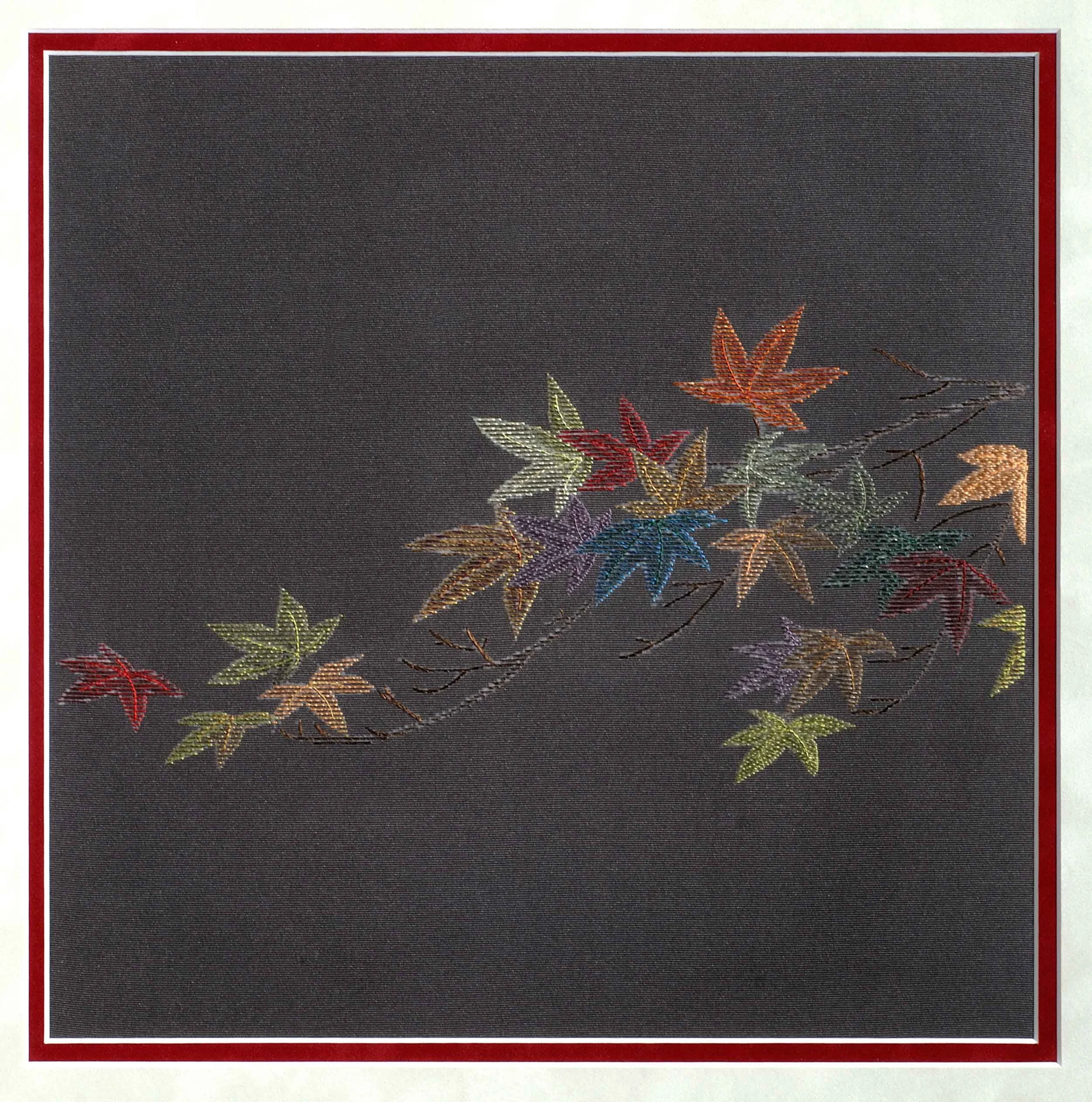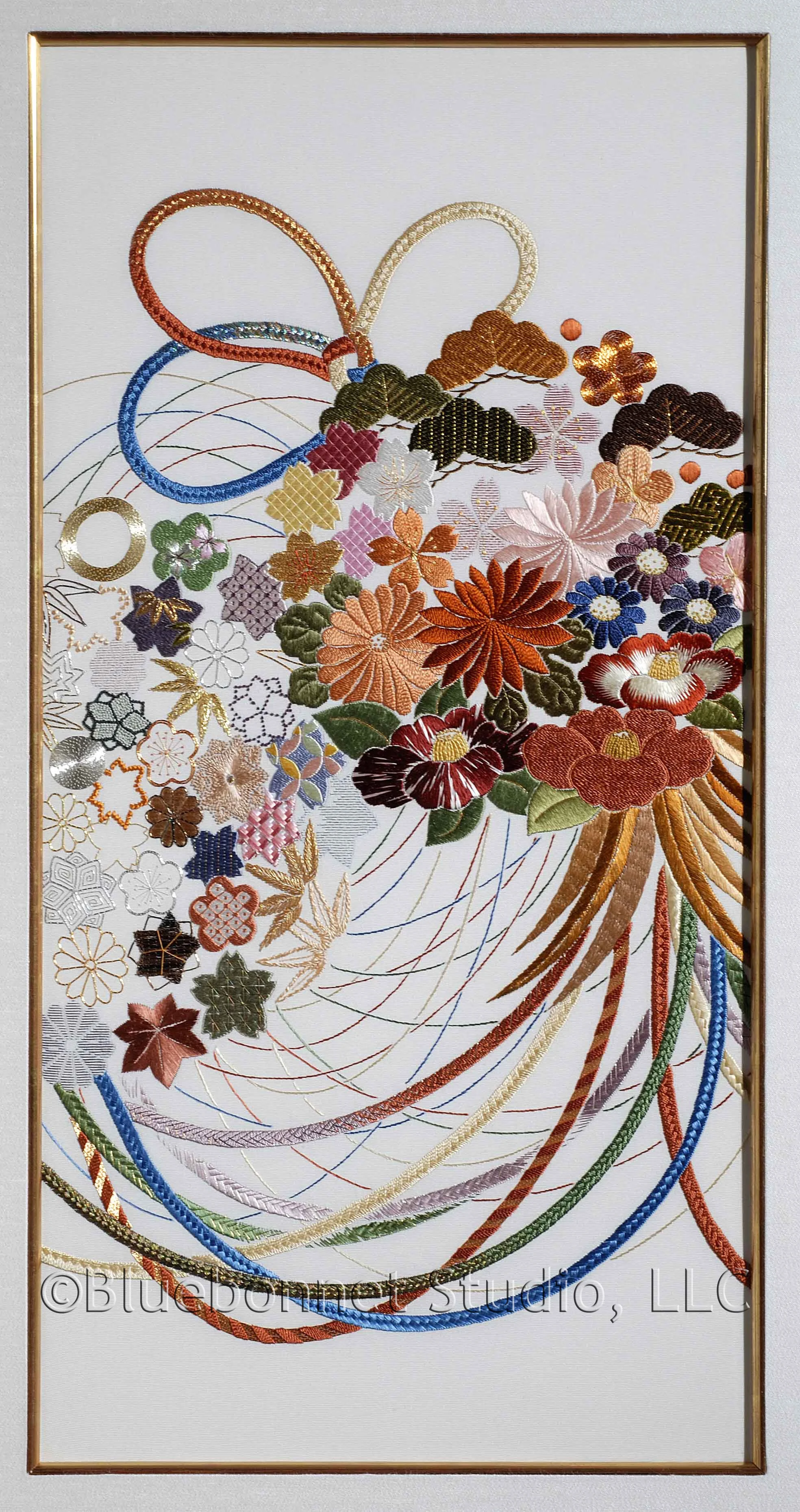Shown below are Japanese Embroidery projects completed by Mary Alice Sinton. Mary Alice is fully accredited by the Japanese Embroidery Center to teach their curriculum in Japanese Embroidery which consists of 10 phases required to become an accredited teacher. If teaching is not your goal one can complete any of the phases, how, project difficulty increases from phase 1 to phase 10. Japanese Embroidery classes are taught at Blue Bonnet Studio in Houston and other locations. Please check out EVENTS for a complete list of dates and times of the Japanese Silk & Bead Embroidery Study Group.
If you would like a copy of Susan Stevens book on Japanese Embroidery please click here. We do not have any in stock and can not get any more.
Hanazume (Phase 1)
Japanese Silk Embroidery - Phase I- Hanazume (Design © JEC)
Silk & Metal Embroidery on White Habatae Silk
Hanazume means Flower Circle. Maple Leaves, Chrysanthemums, Plum Blossoms , Cherry Blossoms and Pine Trees are the symbols found in this design.
Mile High Shochikubai (Phase 1)
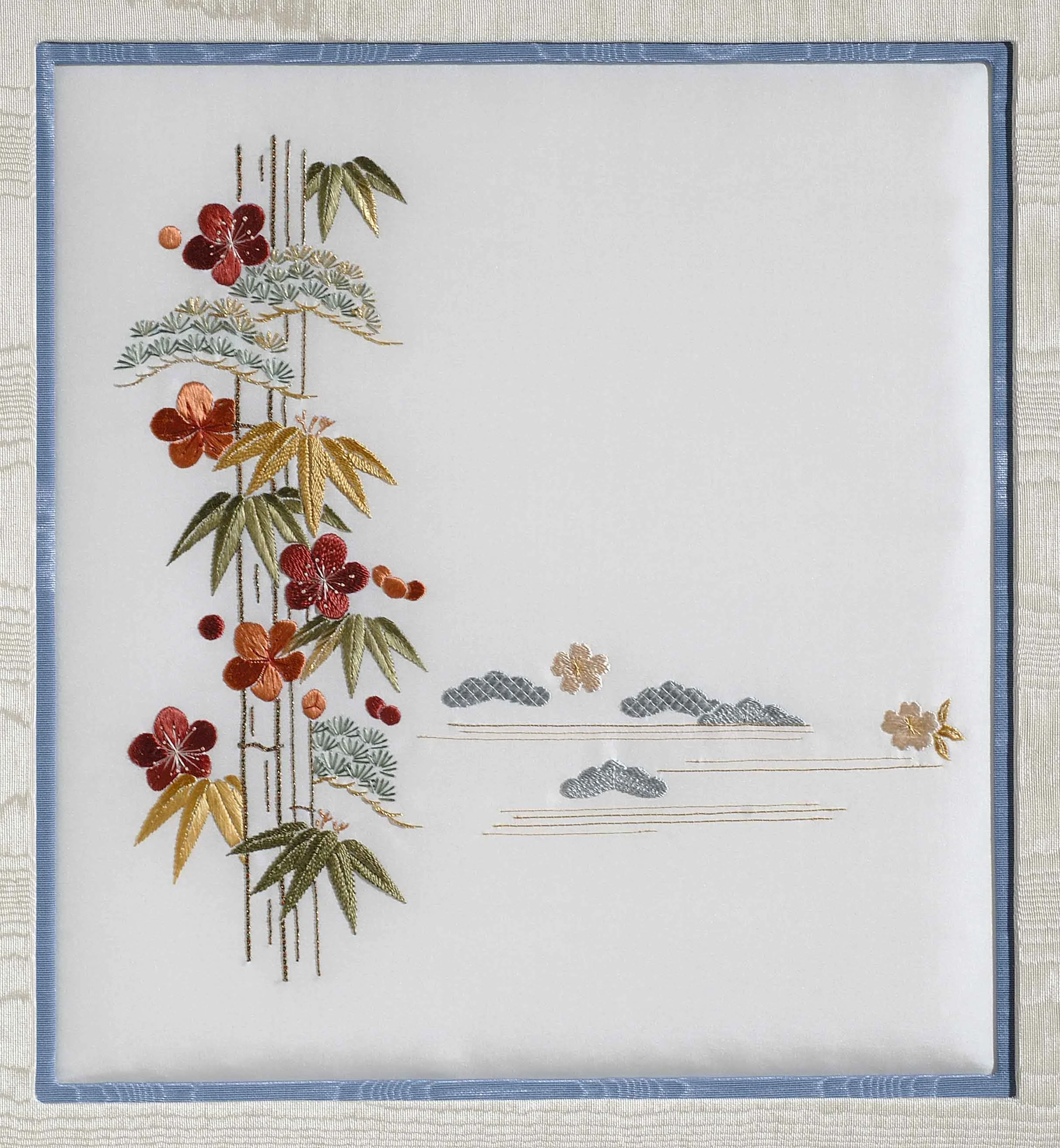
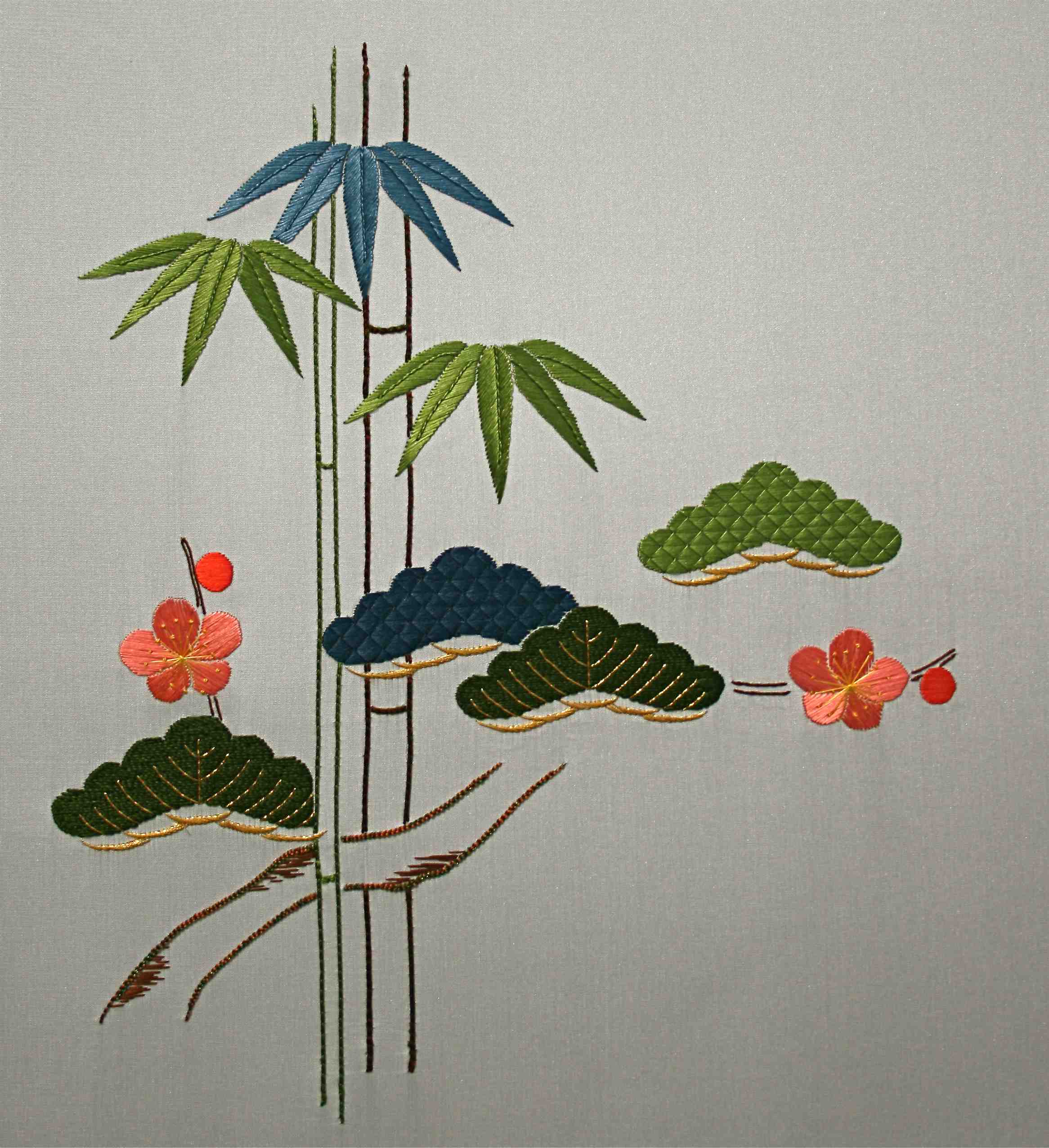
Japanese Silk Embroidery - Phase I Mile High Shochikubai (Design © JEC)
Silk & Metal Embroidery on White Silk Habatae. Shochikubai are the three friends of winter - Plum Blossom, Pine Tree and Bamboo. There are two options: a 4-day class and a simpler 2-day class.
Kirigami (Phase 2)
Japanese Silk Embroidery - Phase II- Kirigami (Design © JEC)
Silk & Metal Embroidery on White Nishijin Silk. Kirigami is the art form of creating paper cut-outs or snowflakes which are then strung together on thread or cords to make a mobile.
Sensu (Phase 3)
Japanese Silk Embroidery - Phase III- Sensu (Design © JEC)
Silk & Metal Embroidery on White Shioze Silk. Sensu is the type of fan when closed the paper or fabric attached to the fan ribs folds back and forth.
Karahana (Phase 4)
Japanese Silk Embroidery - Phase IV- Karahana (Design © JEC)
Silk & Metal Embroidery on Black Shusu Silk. Karahana is a flower design utilizing the various metal thread techniques found in Japanese Embroidery. In the private collection of Dr. Bharat S. Chahar, Houston, TX
Himotaba (Phase 5)
Japanese Silk Embroidery - Phase V- Himotaba (Design © JEC)
Silk & Metal Embroidery on White Shioze Silk. Himotaba is a bunch of cords showing exapmles of various stitching techniques using flat silk, metal threads and twisted silk threads.
Eternal Grace (Phase 6)
Japanese Silk Embroidery - Phase VI- Eternal Grace (Design © JEC)
Silk & Metal Embroidery on Cream Kimono Silk with Shippo pattern
Eternal Grace is a lady in kimono inspired from Japanese antique wood block prints.
Pansies (Phase 7)
Japanese Silk Embroidery - Phase VII- Panies (Design © JEC)
Silk & Metal Embroidery on Two-Toned special dyed Monmuji Silk. This spray of pansies is a study in long and short techniques in both random and realistic affects using both flat silk and twisted silk threads.
Final Dress-up (Phase 8)
Japanese Silk Embroidery - Phase VIII- Final Dress-up (Design © JEC)
Silk & Metal Embroidery on Charcoal Shioze Silk. Final Dress-up celebrates the fall foliage in their brillant colors.
Kusudama (Phase 10)
Japanese Silk Embroidery - Phase X- Kusudama (Design © JEC)
Silk & Metal Embroidery on White Shioze Silk. Kusudama means Flower Ball and this design was created to showcase all 46 of the Japanese Embroidery techniques. Upon completion of this piece the JEC awards you their official teacher certification.
